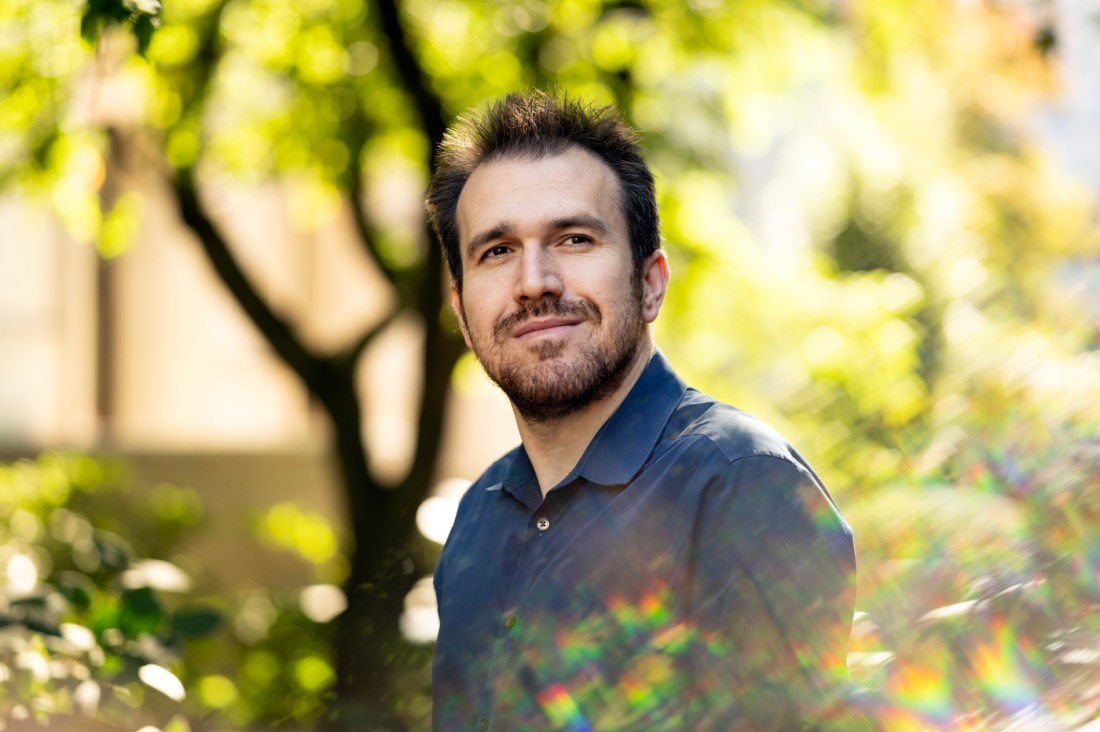Elizabeth Gilbert, best known for her memoir “Eat Pray Love,” has revealed a far darker side of her life in her new autobiographical volume, “All the Way to the River: Love, Loss, and Liberation.”
The book, released Sept. 9, has sparked a storm of publicity and some stark headlines such as “Sex, Drugs and a Murder Plot: Elizabeth Gilbert Has ‘No Shame’ About Any of It,” “Elizabeth Gilbert: ‘I came very close to murdering my partner,’” and “‘Eat, Pray, Love’ author Elizabeth Gilbert reveals shock life of drugs, obsession — and contemplating murder.”
In her third memoir, Gilbert, who since “Eat Pray Love” became an inspiration to 1.2 million Instagram followers, recounts her relationship with Rayya Elias, a longtime friend who later became her partner and who died of cancer in 2018. At the lowest point of their time together — when Elias, a recovering addict, returned to alcohol and drugs and Gilbert became her enabler — the writer makes an astonishing confession: she considered killing her lover.
“It can happen to anybody,” says Norair Khachatryan, assistant teaching professor of criminology and criminal justice at Northeastern University. “Anybody can be driven under the right circumstances, or really wrong circumstances, to think about murder.”
When ordinary people imagine the unthinkable
Khachatryan explains that most people are fundamentally prosocial — they follow social norms and avoid violating other people’s rights. But even prosocial individuals may imagine harming or killing someone in moments of extreme anger.
“That’s usually more in the moment,” Khachatryan says. “It depends on whether you have a problem with impulsivity.”
Even then, many people are capable of stepping back, considering their personal values and consequences for themselves and their families and changing their minds. Whether a person follows through often depends on their access to the means of committing a crime.
Lack of purpose in life or low self-esteem can also push individuals without a criminal record toward violence.
“Low self-esteem can have a profound effect on people and lead them to commit serious violence, especially when they are younger, juveniles,” Khachatryan says. “[It] leads to irrational thoughts of how they will feel more worthy.”
When love turns into codependency and despair
“Eat Pray Love Made Me Do It,” published in 2006, launched Gilbert into literary stardom. The memoir — chronicling her year-long journey of self-discovery around the world, ending with a fairy-tale love story — was translated into more than 30 languages and sold more than 12 million copies worldwide. In 2010, it was adapted into a romantic drama starring Julia Roberts.
But in 2016, Gilbert left her second husband — whom she had met during her “Eat Pray Love” adventures — after learning of Elias’ terminal diagnosis. The two women confessed their romantic feelings and chose to spend Elias’ final months together.
 Extreme anger mixed with impulsivity, low self-esteem and lack of purpose can turn prosocial people into killers, says Norair Khachatryan, Northeastern’s assistant teaching professor of criminology and criminal justice. Photo by Alyssa Stone/Northeastern University
Extreme anger mixed with impulsivity, low self-esteem and lack of purpose can turn prosocial people into killers, says Norair Khachatryan, Northeastern’s assistant teaching professor of criminology and criminal justice. Photo by Alyssa Stone/Northeastern University
As Elias’ cancer progressed, their relationship spiraled. Elias slipped back into active addiction, which Gilbert, addicted to love and sex instead of substances, was facilitating.
“That was a kind of collision of both of our rock bottoms,” Gilbert says. “If the most degraded version of Rayya was a low-bottom opioid and cocaine addict who became very manipulative and abusive and quite terrifying for me to live with, the lowest version of myself … is an enabler who has no boundaries, who will do absolutely anything to be loved, who will pay for everything, who will just constantly try to be pleasing, who will allow herself to be abused.”
Eventually, she devised a way out of their “unmanageable” dynamic: she would give Elias sleeping pills and administer a lethal dose of fentanyl patches.
The psychology of moral disengagement
People in all walks of life can rationalize harmful acts, Khachatryan says, through a process known as moral disengagement.
“Even committing a horrible act they feel like it serves the society,” he says.
Some may justify killing abortion providers, for example, by framing the act as morally right.
Gilbert herself told The Times that her thoughts of killing Elias brought her relief.
“We can end this nightmare right now. All you have to do is kill her, and there’s nothing morally wrong with doing that because she’s already dying,” she says. “There was even a part of me that thought, if the real Rayya were here, she would hate this version of herself and she would be like, ‘Kill that junkie!’ But that was a minor justification. The real thing was, ‘You can kill her and in an hour she will be dead and you can have your life back — you can be free.’”
Childhood experiences can also shape how people view violence. For example, when children see their father abuse their mother and achieve his goals through violence, Khachatryan says, they may learn that violence is a way to achieve what they want.
Severe neglect and abuse, he says, can produce anti-social attitudes, anger and a sense of injustice in one’s immediate circle or society and a desire to inflict pain and destruction.
A newer driver of violence is online radicalization. Vulnerable individuals can embrace violent ideologies, consuming social media content and reading forums. But often, Khachatryan says people susceptible to radicalization have already been feeling empty or lacking purpose, making them receptive to a “worthy cause to fight for.”
“In war, you get soldiers who do horrible things … commit crimes and sexual assault on a widespread basis just because their commanders tell them, ‘We want you to destroy this population,’” he says.
When thoughts become crimes
Thinking about murder is not a crime in itself, Khachatryan says. But intervention becomes crucial if those thoughts are shared.
“If that idea is communicated to someone else, that’s a good time for intervention,” he says.
A prosocial person can often regain perspective and realize how illogical his or her thoughts were when someone intervenes and helps them reflect on their ideas and consequences.
But once a person takes concrete steps such as paying someone for a murder or buying a specific weapon, Khachatryan says, they may face criminal charges or be civilly committed to psychiatric care.
Gilbert never crossed the line between thought and action. Instead, she reached out for help from friends and left Elias in their care.
In the years after Elias’ death, Gilbert confronted her sex and love addiction, processed their relationship and eventually decided to write openly about it.
“I was interested in the truth and I was interested in showing what codependency and sex and love addiction can lead a person into. Even a person who presents as somebody who’s got it all together, which is how I was out there in the world presenting,” she told NPR.

